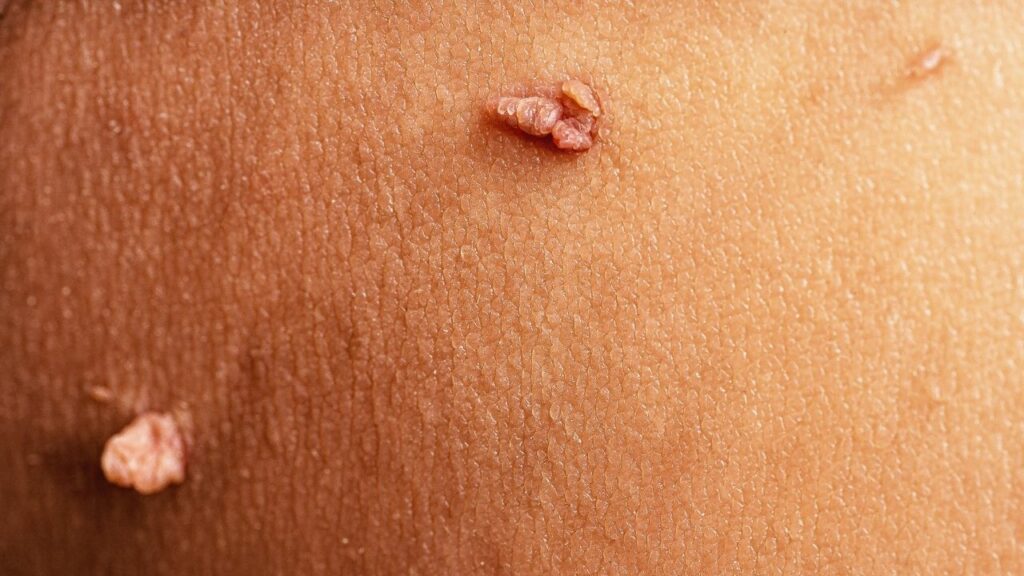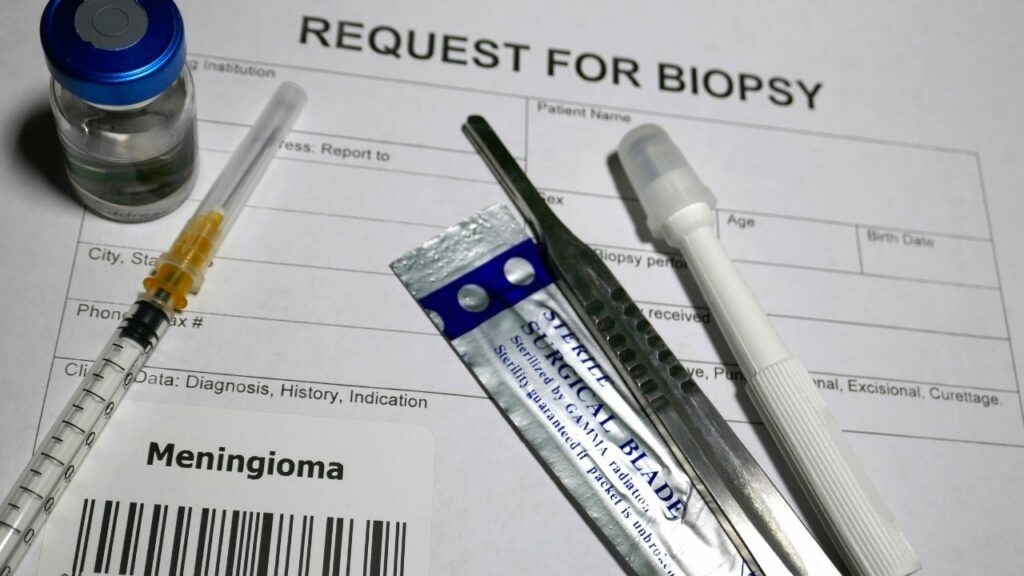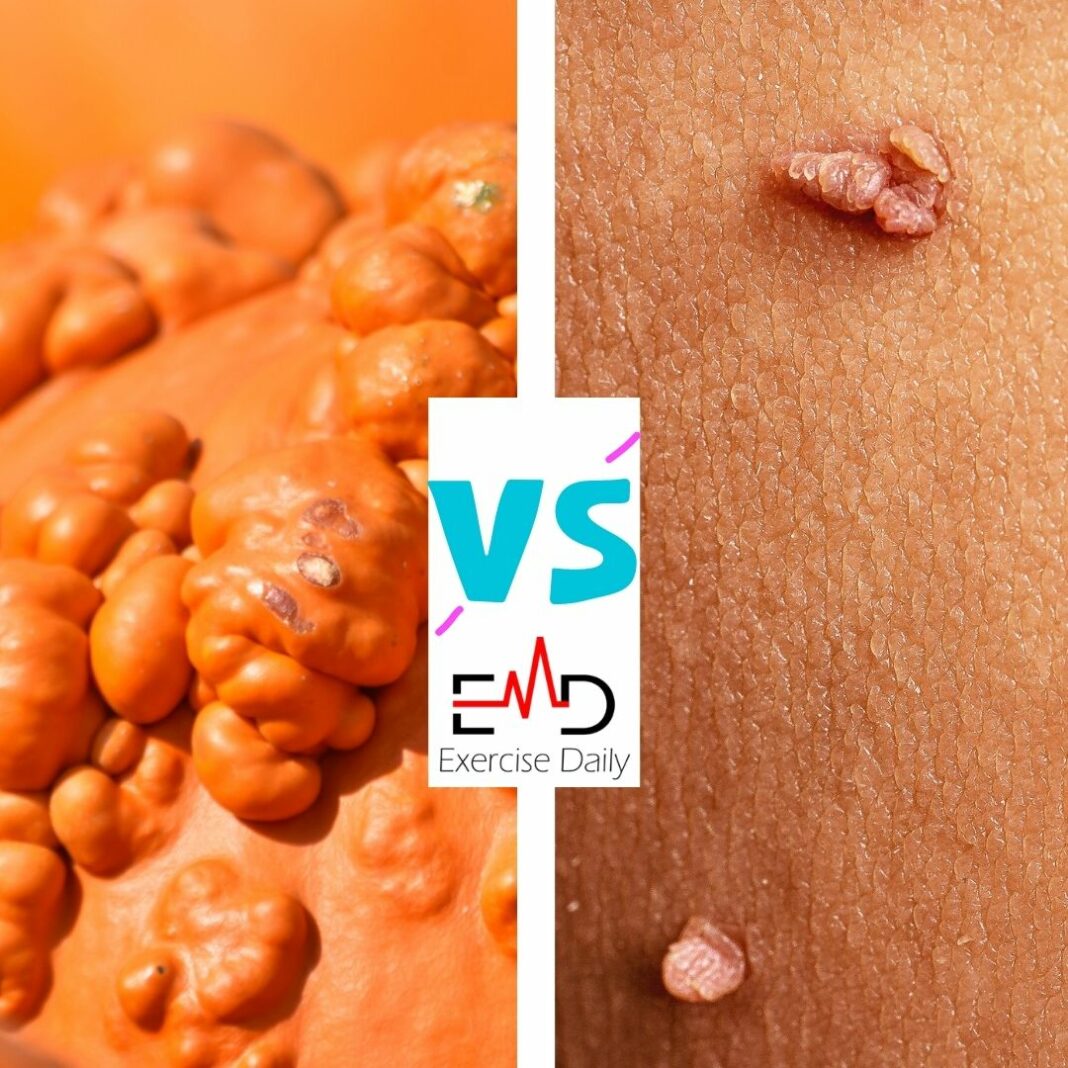Exercise Daily – Two frequent forms of genital skin disease are called genital warts and genital skin tags. They may be mistaken for one another due to the environments in which they grow and the ways in which they appear. Let’s find out more about genital warts vs skin tags.
Skin tags are typical growths that are completely innocuous. They tend to develop in places of the body where the skin folds, such as the crotch, eyelids, and neck. They often have the form of an oval or an egg and are supported by a fleshy stalk.
The human papillomavirus, sometimes known as HPV, is the virus that’s responsible for genital warts. HPV is a sexually transmitted illness that affects many people (STI).
On the surface of the skin, genital warts often appear as lesions or lumps that are either completely flat or very slightly elevated. In most cases, they have a rough or bumpy texture, and they may seem like cauliflower.
Genital warts, much like skin tags, are not malignant and pose no health risk. Rather, they are an indication of an infection. Warts on the genital region have a chance of disappearing on their own. However, treatment may prevent further growth of warts and alleviate any pain they may cause.
What exactly do they look like?
Despite the fact that these two skin disorders have a similar appearance, there are a few key distinctions that may help you tell them apart.
Skin tags are little, flesh-colored patches of skin that dangle off the body. In most cases, they do not experience any symptoms, such as discomfort or itching.
Warts, in contrast to skin tags, have a pearly, bumpy look and are often seen in parts of the body that have had sexual contact in the past, such as the:
- Vagina
- Penis
- Pubic region
- Anus
- Mouth
- Throat
They can experience itching or a feeling of irritation, and this can be a difference between genital warts vs skin tags.
Tips for identification
Skin tags and genital warts may either form as a single lump or as a cluster of bumps. Over the course of time, other tags or warts may develop in the same region. The size of these lumps is often rather inconspicuous, which may make accurate identification more challenging.
Nonetheless, there are distinct visual variations between the two that can help you determine which one you have.
Genital skin tags
Soft tissue fibromas, often known as genital skin tags, are flesh-colored growths that may occur anywhere on the body. They grow on stalks or very little “limbs” that extend from the surface of your skin as they expand.

They should be easy to bend and are pliable when they are pushed. Even while the vast majority of skin tags are rather little, some of them may be as big as an eraser on a pencil. A skin tag the size of a grape or even a fig may form in some people’s bodies.
Tags on the skin grow quickly in the first phases of their growth, but after that, they seldom continue to expand. The color of a tag may shift from flesh to a brighter brown, and then to a deeper brown with time.
This shift in hue is common and, in most cases, there is no need to be concerned about it. But how do we differentiate between genital warts vs skin tags? Let’s find out.
Tags on the skin are quite prevalent. In most cases, they manifest themselves on the neck, in the creases of the armpits, or in the spaces between other folds of skin. It is also possible for them to form in the groin area or on your genitalia.
Tags found in the vaginal canal are uncommon. This is because the vagina has a naturally wet environment. The majority of tags are created by friction, and the wet atmosphere eliminates the possibility of this happening. There is still a chance of skin tags developing on the pubis or labia.
Genital warts
The lumps that make up genital warts might be completely flat or have a very tiny elevation to them. They are seen in the following:
- Pubis
- Vagina
- Vulva
- Penis
- Anus
It’s possible for genital warts to seem like flesh or a hue that’s quite similar to your skin tone. They may also be pink or brown in color. It’s possible that the color of genital warts will change over time.

There is a possibility that genital warts may vanish but then reappear in a different location. When you touch the surface of genital warts, you could get a bumpy or rough sensation. They are often referred to as having a “cauliflower” appearance.
They might manifest as a single protrusion or proliferate in the form of discrete clusters of bumps. Genital warts have the potential to irritate and even bleed on occasion.
Genital Warts vs Skin Tags: Risk Factors
These bumps are generated by wholly separate substances, despite the fact that they are often confused for one another based only on their outward look.
Genital skin tags
There is no clear explanation for why about half of all individuals will eventually get at least one skin tag. However, skin tags are quite common. There are several things that might put you at a higher risk of having them.
The following are the most prevalent risk factors for developing genital skin tags:
Friction
Tags on the skin may be caused by friction between the skin and fabric. These include those caused by clothes or undergarments.
The sensitive skin of the vaginal region may get irritated and lead to the development of these microscopic growths if it is rubbed against clothing on a regular basis. Genital skin tags may also be caused by friction that occurs during sexual activity.
Pregnancy
During pregnancy, your hormone levels may fluctuate, which may put you at an increased risk.
Obesity
Skin tags are more common in people who are obese and have a higher risk of developing obesity-related skin conditions.
Type 2 diabetes
Tags on the skin are sometimes an indicator of diabetes type 2 or elevated insulin levels.
Age
People aged 40 and older have a significantly increased risk of developing skin tags.
Genetics
If other members of your family have skin tags, there is a possibility that you may also get them.
Genital Warts
In contrast to genital skin tags, physicians are aware of the specific cause of genital warts. It is an infection caused by HPV. This is a form of sexually transmitted infection (STI), and it is very infectious. This is one major difference in the subject of genital warts vs skin tags.
There have been more than one hundred different varieties of HPV discovered. Only a small subset of them are the causative agents of genital warts.
The HPV virus is quite prevalent. It is anticipated that more than 80 percent of sexually active people will get infected at some point throughout their lifespan. On the other hand, it is uncertain whether or not this particular strain causes warts.
If this is the case, it might be weeks or even months before warts show up.
Diagnosis of genital warts vs skin tags
It is a good idea to see a medical professional if you are unsure about the unusual growths. If you have any reason to believe that the spots you see on your skin are genital warts or if you are aware that you have been exposed to HPV, you should make an appointment with your primary care physician as soon as possible.
Your doctor will examine any lumps or growths that are present during the physical exam in order to arrive at a diagnosis. They could do an STI test on you. Your physician may potentially decide to do a biopsy.

Your physician will remove one of the growths or lumps in order to do a biopsy. They are going to freeze the area, which is something that is routinely done in an office environment. They will transport the tissue to a laboratory so that it may be analyzed further under a microscope there.
In most cases, your lab technician will be able to determine a diagnosis based only on this visual examination. In the event that the findings are ambiguous, your physician may decide to request blood tests in order to rule out any other possible explanations.
Various possibilities for treatment
The treatment for genital warts and genital skin tags is distinct from one another.
Treating skin tags
The majority of the time, skin tags do not need medical attention. If they don’t bother you or create any other issues, your doctor will generally simply keep them.
Managing the treatment of genital warts
Additionally, you do not need to seek treatment for genital warts since, in many cases, they will clear up on their own. However, there are certain advantages to treating them, including the following:
- Putting an end to the scratching
- Reducing the likelihood that the infection will spread.
- Providing you with the peace of mind that the warts are not cancer
If you do choose to seek treatment for your genital warts, your physician will most likely recommend that you take a medicine such as podofilox or imiquimod.
Removing skin tags or genital warts
If you want to get rid of genital warts or genital skin tags entirely, your alternatives are typically the same. These therapies consist of the following:
- Cryosurgery is a procedure that uses liquid nitrogen to freeze and remove warts
- Excision, which may be done manually or surgically and entails cutting warts out of the skin
- Electrocautery is a method for removing warts with the use of an electrical current
- Trichloroacetic acid (TCA), which is used topically and may be done so as often as once per week
Genital Warts vs Skin Tags: Prevention
Because the causes and mechanisms of the development of skin tags are not entirely understood, there is often no way to stop them from appearing.
Genital warts, on the other hand, are something you can work to avoid. If you are sexually active, using a barrier device like a condom or another method may help reduce the chance of you contracting HPV.
It is also essential to inform any potential sexual partner about a previous history of genital warts and to abstain from interaction with new sexual partners until warts have been properly treated.
You also have the option of getting the HPV vaccination. The vaccination provides protection against the most prevalent forms of HPV, including those ones that may lead to genital warts.
You are still able to acquire the vaccination even if you are beyond the age of 25. It’s possible that it still offers some degree of protection. Talk things over with your physician so you can make an educated choice.
Natural Remedies to Treat Warts and Skin Tags
Apple cider vinegar
Vinegar derived from fermented apple juice is an acidic chemical known as apple cider vinegar. It is believed that it works similarly to salicylic acid, which is a typical therapy for warts that involves peeling away contaminated skin in order to remove the wart.
Vinegar also has natural antibacterial characteristics. It might be beneficial in the battle against HPV. Both genital warts vs skin tags require time for removal with apple cider vinegar.
To give it a try, combine equal amounts of apple cider vinegar and water in a mixing container. Soak a cotton ball in this solution and set it aside. After applying it to the wart, wrap it with a bandage to keep it in place. Keep it on for at least three and a half to four hours.
At all times, apple cider vinegar should be diluted with water. The acidity has the potential to irritate the skin and produce chemical burns. Additionally, it should not be used to any cuts or wounds that are already open.
Banana peel
There is some anecdotal evidence that the peel of bananas might assist in the removal of warts. If you are interested in giving it a go, cut off a little piece of the banana peel and tape it over the wart before you go to bed.
Make sure that the inside of the peel is in contact with your skin. Maintain this setting even while you sleep, and do so each day.
Garlic
Psoriasis, keloid scars, and corns are just some of the skin ailments that garlic has been used to treat successfully for a long time. Additionally, it is used in the treatment of bacterial, fungal, and viral diseases, including warts.
Garlic has a component called allicin, which has been shown to have antibacterial effects and is also often investigated for its antiviral and immunomodulating characteristics. When you diagnose genital warts vs skin tags, it’s time to start treating with garlic.
To use garlic as a treatment for warts, just crush up one clove and combine it with some water. After application, a bandage should be placed over the wart. Perform this process once a day for the next three to four weeks.
Garlic juice or rubbing a clove of garlic directly on the wart is another option.
Orange peel
Orange peel is another common treatment for warts. It is a low-cost alternative. A wart may be treated with this home treatment by rubbing an orange peel on it once each day. It is said that the wart will get darker in color before eventually falling out.
This might take up to two weeks or perhaps longer.
Pineapple
Pineapple contains a lot of bromelains, which is a blend of protein-digesting enzymes that may assist in the removal of dead and damaged skin.
There is some evidence to suggest that bromelain may be beneficial in treating a few medical diseases. In a few different methods, people have claimed that utilizing pineapple juice was successful in eliminating warts.
One possible treatment is to apply fresh pineapple juice to the wart on a daily basis. Another method is to apply fresh pineapple on a daily basis.
Frequently Asked Questions
How do I know if its a genital wart or skin tag?
- Skin tags are often smooth. However, genital warts have a scratchy texture to them when you touch them.
- Skin tags protrude from the surface of the skin, while genital warts are often flat or very slightly elevated.
- The presence of several genital warts at once is not typical of a skin tag, which most often occurs singly.
What can be mistaken for genital warts?
It is possible to confuse genital warts with other benign skin growths such as moles, skin tags, or penile pearly papules. These items do not constitute infections in any way. They are only typical components of you.
Can HPV look like a skin tag?
The HPV virus is generally responsible for the development of genital warts. It’s possible that those growths on your genitalia that seem like skin tags are really genital warts. The HPV virus is generally to blame for the development of genital warts.
Because some types of HPV are known to raise a person’s chance of developing cancer, a medical professional could examine warts in order to identify the strain.
What do genital warts look like when they first appear?
Warts on the genitalia are flesh-colored, pink, or red growths that may appear anywhere in or around the sexual organs. It’s possible that warts will resemble the smaller florets on cauliflower. They can be very minute and difficult to see.
They often occur in groups of three or four, and they have the potential to expand and spread quite quickly.
What does a genital wart bump look like?
Genital warts are skin-colored or white spots that may appear on your vulva, vagina, cervix, penis, scrotum, or anus. They can also spread to other parts of your genital tract. They have a vague resemblance to bite-sized bits of cauliflower.
You could have a single wart or a whole number of them, and each one might be very large or quite little. They might irritate your skin, but in most cases, they won’t cause you any pain.
Take Away
It is possible to get very good results with treatments for both skin tags and genital warts. Diagnosis of genital warts vs skin tags is the key. After receiving therapy, there is no assurance that more skin tags won’t emerge in the future.
Treatment won’t clear up your HPV infection if you’re already struggling with warts. Because the virus will continue to replicate inside your body, you run the risk of developing more genital warts.
The lumps on the genital area are not likely to develop into cancer and are not regarded to be dangerous. However, you should make an appointment with your physician if you see any changes that are not usual.




